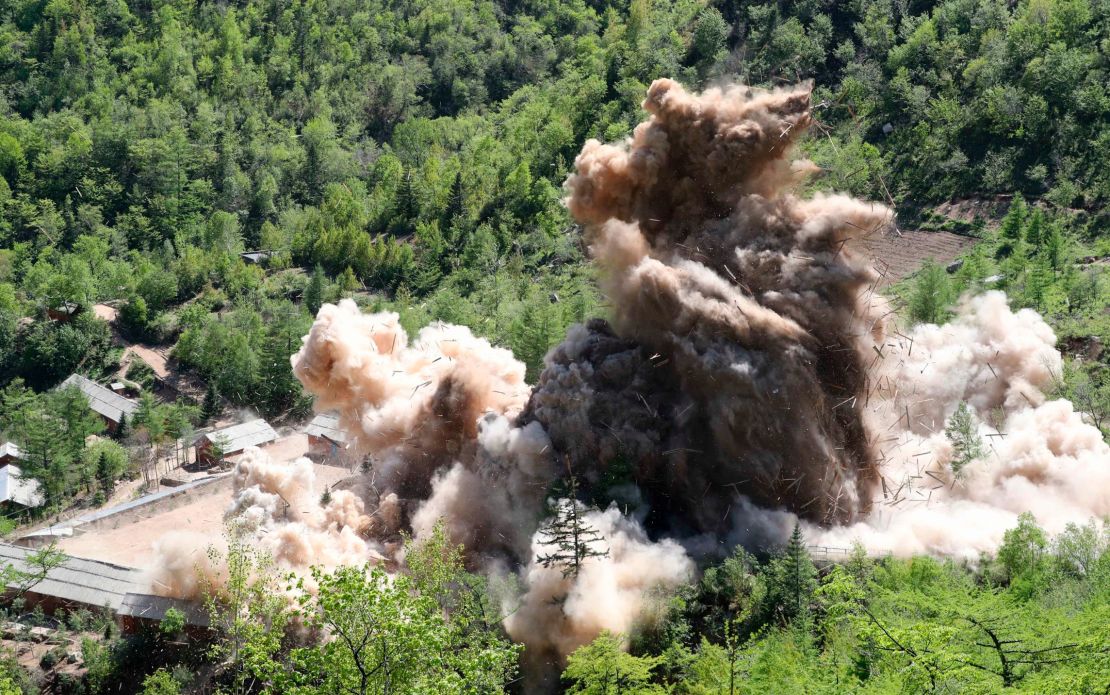What first appeared to be a gesture indicating North Korea might be willing to dismantle its nuclear weapons program appears to have been little more than a propaganda effort for the world’s cameras.
Billing it as an exercise in transparency, North Korean officials invited international journalists to witness the detonation of their underground nuclear test tunnels at Punggye-ri – but intelligence has increasingly shown that the public spectacle may have amounted to little more than a show, according to US intelligence and international arms control officials.
A CNN crew at the remote mountain site in the country’s north witnessed explosions at nuclear tunnels 2, 3 and 4 from observation decks about 500 meters (547 yards) away. They were among two dozen journalists invited into the country to observe the apparent destruction of the site.
Hours later, the White House canceled a planned meeting between North Korean leader Kim Jong Un and US President Donald Trump, but Trump announced Friday that the June 12 summit is back on despite no further demonstrations of goodwill by Pyongyang.

No weapons inspectors or nonproliferation experts were invited to witness the detonation, and now initial assessments indicate that the show was essentially a charade.
“The explosions seem to have been too small” for scientists to have discerned any significant geologic activity such as collapsing tunnels, an international arms control official who follows North Korea closely told CNN.
“The fact that journalists were reportedly only around 500 meters from the explosions is a good indication that these were small blasts. And the amount of dust leads us to believe that they were quite superficial,” the official said.
This finding is also underscored by US intelligence.
North Korea blows up tunnels at nuclear test site
Preliminary analysis of North Korea’s detonation indicates the explosions were not strong enough to destroy the tunnels, a US official with knowledge of the findings told CNN.
The analysis is based on seismic sensors in the region that calculated how large the explosive events were at the time.
This may be one of the clearest indications that at least portions of the tunnel complex remain usable, something the US had suspected since the North Koreans allowed media to view the detonations.
US officials have also confirmed that imagery shows technical equipment was removed from the tunnel complex prior to the detonations, indicating the North Koreans were keeping gear for potential reuse.
On Tuesday, CNN reported that a series of US intelligence assessments concluded that while Kim could give up some weapons in negotiations with the US – including warheads and missiles – he may not be willing to give up his capabilities to regenerate his program.
That would include keeping scientific, engineering and technical capabilities and personnel, which would be seen by Kim as his insurance policy to ensure he could stay in power, officials said.
“He is not going to do anything that allows him to become vulnerable,” one official told CNN. Kim also could decide to keep some hidden weapons inventories, officials acknowledged.
So far, US officials say, the Kim regime hasn’t taken any steps on denuclearization that could not be readily reversed.
CNN’s Will Ripley, Tim Schwarz and Paul Devitt contributed to this report.

















